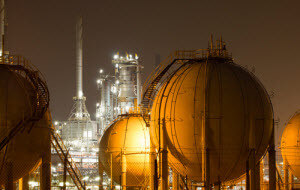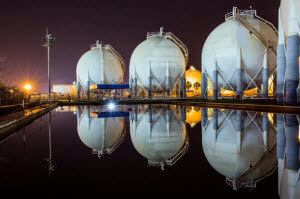Using LNG as an Alternative Fuel
There are many benefits of using liquefied natural gas (LNG) as an alternative fuel, and the industry has picked up traction over the last few years. There has been a lack of fueling infrastructure and costs that have made companies consider LNG as a source of their own.
However, one of the main issues is that, although there’s plenty of LNG to meet these company’s needs, there are major concerns about whether they’re located close to the LNG and if the production can be repeated.
 LNG Industry discusses the expansion production infrastructure that addresses the concerns of end users, such as supply availability, proximity, and reliability.
LNG Industry discusses the expansion production infrastructure that addresses the concerns of end users, such as supply availability, proximity, and reliability.
Learn more about Applied LNG and the opportunity they saw to create an LNG showcase market.
LNG Production Facility in Texas, US
Applied LNG discovered the market in Texas, which has potential end users who are involved in the trucking, oilfield, mining, rail, marine, agricultural, commercial, and industrial sectors.
An in-state LNG plant was serving Texas, but additional supplies were being shipped from as far away as Tennessee. LNG wasn’t being adopted as quickly because it seems like it was only available at this slow pace.
Applied LNG set out to create an LNG production facility in Midlothian, TX. All of the plans were in motion until they experienced a setback when oil prices dropped.
They had spent significant funds and completed a great deal of work, so the project continued at planned. Applied LNG’s financing partner, Texas Capital Bank, approved of the decision to move forward.
The Reason Behind the Location
Why did Applied LNG select Midlothian, TX, for the site of the production facility? At approximately 30 mile south of the Dallas-Fort Worth metro area, there was careful consideration of this selection that included three major factors: “Proximity to a diverse customer mix that can potentially use LNG as an alternative fuel, weighing the customer mix based on likelihood and schedule for adopting LNG, and availability of LNG from existing sources.”
All of these factors were crucial and would make or break the production facility.
The Liquefaction Technology
 While the project begins with just one liquefaction train, it continues until it contains six liquefaction trains at full build-out.
While the project begins with just one liquefaction train, it continues until it contains six liquefaction trains at full build-out.
Two different types of gas supply options were evaluated, with the difference being cost, schedule, and terms, while one is odorized and the other is non-odorized. Applied LNG selected the non-odorized supply.
The Project’s End
After taking roughly 24 months until commercial operations, the plant construction was completed in 2015.
Today, the Dallas-Midlothian LNG Plant is located on a 31-acre property in the city of Midlothian, near the Texas oil patch and other industrial areas.
It contains two truck loading bays, and daily LNG production is 86,000 gallons, which will be 516,000 gallons at full build-out. The annual production is 30 million gallons, with 180 million gallons at full build-out. And it stores 300,000 gallons, with 1.5 million gallons at full build-out. While there’s just one production train now, there will be six at full build-out.
Learn more about the high-quality valves and fittings offered at CPV Manufacturing. If you have any questions, please contact us today.

